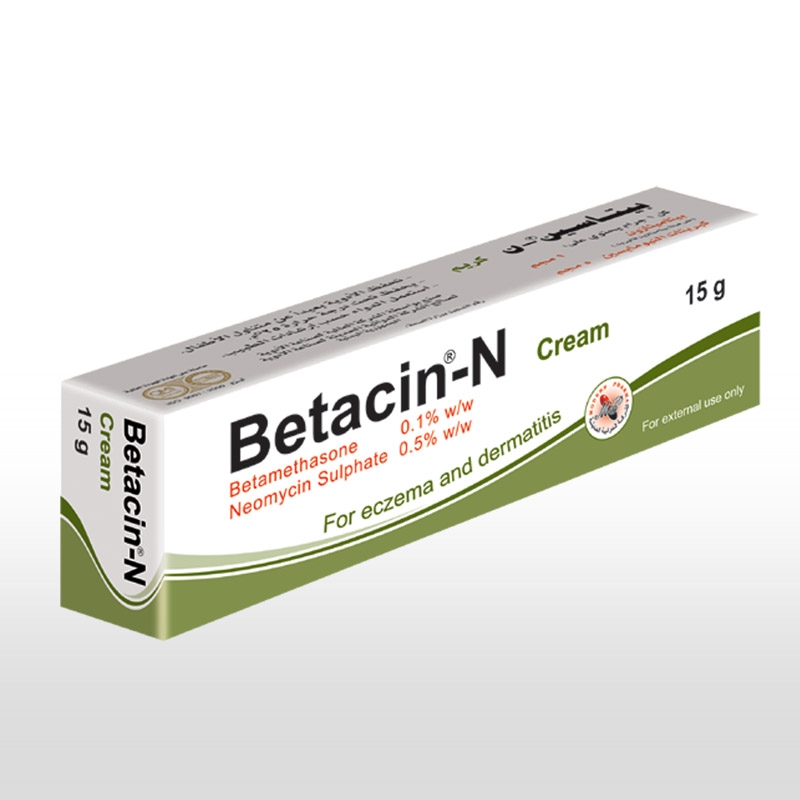Betacin-N Cream
-Betacin-N® contains two active components:
Betamethasone valerate, a glucocorticoid that has potent anti-inflammatory action.
Neomycin sulphate, an aminoglycoside that is bactericidal antibacterial, active against most Gram-negative and some Gram-positive organisms.
-Betacin-N® ointment is preferred for dry lesions and particularly useful for skin areas where topical absorption is poor such as the palm, sole, elbow and knees, while Betacin-N® cream is useful for moist or weeping skin like face, neck, axilla.
-Betacin-N® ointment / cream possess antipruritic, and anti-inflammatory actions.


